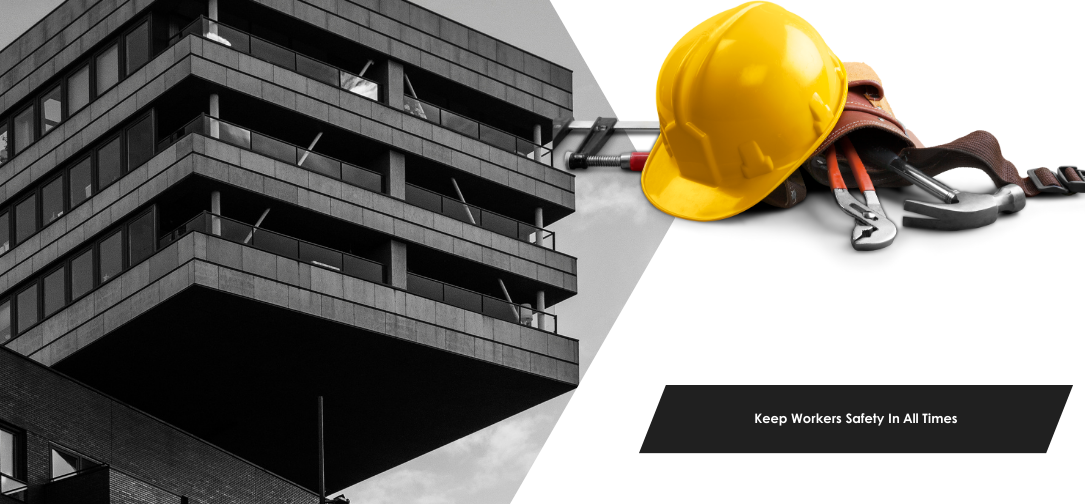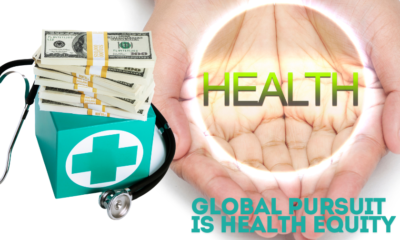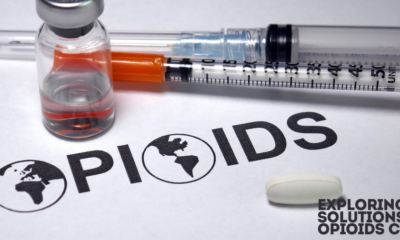Public Safety
Occupational Health and Safety: Protecting Workers in High-Risk Jobs

Occupational Health and Safety (OHS) is a multidisciplinary field concerned with the safety, health, and welfare of people at work. It is a critical component of workplace management and organizational culture, particularly in high-risk jobs where workers face significant hazards and potential life-threatening situations. High-risk occupations, such as mining, construction, healthcare, firefighting, and chemical manufacturing, expose workers to diverse dangers, including physical, chemical, ergonomic, biological, and psychosocial risks. Ensuring a safe working environment is not only a legal and ethical obligation but also essential for improving productivity, employee morale, and organizational reputation. This article delves into the intricacies of occupational health and safety, the challenges faced in protecting workers in high-risk jobs, and the comprehensive strategies required to safeguard these workers.
The Importance of Occupational Health and Safety in High-Risk Jobs
In high-risk jobs, the probability of accidents, injuries, and even fatalities is significantly higher than in other professions. According to the International Labour Organization (ILO), every 15 seconds, a worker dies from a work-related accident or disease, and 153 workers have a work-related accident. Annually, this translates to more than 2.78 million deaths globally, underscoring the gravity of OHS in protecting workers.
OHS is critical because:
1) Humanitarian Concerns: Every worker has the right to a safe and healthy working environment. High-risk jobs should not equate to disposable lives. It is the fundamental duty of employers and governments to ensure that workers return home safely.
2) Legal Obligations: Regulatory bodies worldwide have established laws and guidelines that mandate organizations to provide a safe working environment. Non-compliance can lead to legal ramifications, fines, or even shutdowns.
3) Economic Implications: Workplace accidents and illnesses can be costly for organizations, leading to lost workdays, increased insurance premiums, compensation payouts, and reduced productivity.
4) Reputation and Morale: A strong OHS program enhances an organization’s reputation, attracting talent and improving employee morale and engagement.
Categories of High-Risk Jobs
High-risk jobs span various industries, each presenting unique challenges and hazards. Understanding these categories is essential for developing targeted safety protocols.
1) Construction and Mining: Workers in construction and mining face physical hazards such as falls from heights, machinery accidents, cave-ins, exposure to harmful dust and chemicals, and long-term health issues like silicosis and hearing loss.
2) Healthcare: Healthcare professionals are exposed to biological hazards (e.g., infectious diseases like COVID-19, HIV, and tuberculosis), physical hazards (e.g., needle-stick injuries, musculoskeletal disorders), and psychosocial risks (e.g., workplace violence, burnout).
3) Manufacturing and Chemical Processing: Workers in these sectors face risks from hazardous chemicals, machinery, explosions, fires, and repetitive strain injuries. Chemical exposure can lead to respiratory issues, skin diseases, or even cancer.
4) Transportation and Logistics: Truck drivers, pilots, and ship crew members are prone to accidents, ergonomic injuries, fatigue-related incidents, and mental health issues due to extended working hours and isolation.
5) Emergency Services (Firefighting, Police, Rescue Operations): These professionals face extreme physical dangers, including fire, gun violence, toxic exposure, and psychological stressors like trauma and post-traumatic stress disorder (PTSD).
Common Hazards in High-Risk Jobs
Occupational hazards are broadly categorized into five main groups:
1) Physical Hazards: These are the most common hazards in high-risk jobs. They include noise, vibration, radiation, temperature extremes, and falls. Workers exposed to such hazards may suffer from hearing loss, burns, fractures, or other serious injuries.
2) Chemical Hazards: Workers exposed to chemicals, such as solvents, acids, gases, and dust, face risks of poisoning, chemical burns, respiratory issues, and chronic diseases like cancer. Proper labeling, storage, and handling of chemicals are vital to preventing exposure.
3) Biological Hazards: Healthcare workers, laboratory technicians, and agricultural workers may be exposed to viruses, bacteria, fungi, or biological toxins, leading to infections, allergic reactions, or other illnesses.
4) Ergonomic Hazards: Poorly designed workstations, repetitive motions, and heavy lifting can lead to musculoskeletal disorders, including back injuries, carpal tunnel syndrome, and chronic pain.
5) Psychosocial Hazards: Stress, bullying, violence, and excessive workloads contribute to mental health problems such as anxiety, depression, and burnout. These hazards are particularly prevalent in emergency services and healthcare sectors.
Strategies for Protecting Workers in High-Risk Jobs
Protecting workers in high-risk jobs requires a multi-faceted approach that combines regulatory compliance, technological innovation, risk assessment, and a strong safety culture. The following strategies are critical for creating a safe and healthy working environment:
1) Risk Assessment and Hazard Identification
A thorough risk assessment is the foundation of any effective OHS program. Organizations must regularly conduct comprehensive risk assessments to identify potential hazards, evaluate risks, and implement control measures. This process involves:
- Identifying Hazards: Understanding the nature and types of hazards present in the workplace.
- Evaluating Risks: Assessing the likelihood and potential severity of harm resulting from these hazards.
- Implementing Controls: Applying control measures to eliminate or mitigate risks, such as engineering controls, administrative controls, and personal protective equipment (PPE).
2. Engineering Controls
Engineering controls are physical changes to the workplace that reduce or eliminate hazards. These controls are considered the most effective in the hierarchy of hazard control. Examples include:
- Substitution: Replacing hazardous materials with less hazardous ones.
- Isolation: Enclosing hazardous processes or substances to prevent worker exposure.
- Ventilation Systems: Using local exhaust ventilation to remove airborne contaminants.
- Safety Barriers and Guards: Installing protective barriers around dangerous machinery to prevent accidents.
3. Administrative Controls
Administrative controls involve changing work practices and policies to reduce the risk of exposure to hazards. These include:
- Training and Education: Workers must be trained on safe work procedures, hazard recognition, and emergency response. Continuous education and refresher courses help maintain a safety-first mindset.
- Job Rotation and Work Scheduling: Rotating workers to different tasks reduces the risk of repetitive strain injuries and fatigue.
- Safety Protocols and Signage: Clear safety procedures and adequate signage can guide workers in avoiding potential hazards.
- Regular Inspections and Audits: Conducting regular safety inspections and audits helps identify areas for improvement and ensures compliance with safety standards.
4. Personal Protective Equipment (PPE)
PPE serves as the last line of defense against workplace hazards. It includes safety helmets, gloves, respirators, safety goggles, ear protection, and high-visibility clothing. While PPE does not eliminate the hazard, it reduces the risk of injury or illness. It is crucial that PPE is properly selected, maintained, and used in conjunction with other control measures.
5. Technological Innovations
Advancements in technology have revolutionized occupational health and safety, providing innovative solutions to manage and mitigate risks. Some of these technological interventions include:
- Wearable Safety Devices: Smart helmets, vests, and bracelets can monitor workers’ vital signs, detect hazardous environments, and send alerts in real time.
- Drones and Robotics: Drones are increasingly used for inspecting hazardous areas, such as high-rise buildings or confined spaces, reducing the need for workers to be exposed to dangerous situations. Robotics can perform high-risk tasks, such as handling hazardous chemicals or materials.
- Virtual Reality (VR) Training: VR-based training programs provide workers with immersive, risk-free simulations to practice handling emergencies and high-risk scenarios.
- IoT and AI: The Internet of Things (IoT) and Artificial Intelligence (AI) can monitor workplace conditions, predict potential hazards, and automate safety protocols.
6. Health Surveillance and Monitoring
Regular health surveillance is vital in high-risk occupations to detect early signs of work-related illnesses and prevent them from becoming severe. Monitoring may involve:
- Medical Examinations: Regular check-ups, including lung function tests, hearing tests, and vision screening, can help identify early symptoms of occupational diseases.
- Biological Monitoring: Measuring exposure to hazardous substances through biological samples (e.g., blood, urine) can prevent overexposure.
- Psychological Support: Providing access to counseling and mental health services is crucial for workers exposed to traumatic events or high-stress environments.
7. Building a Strong Safety Culture
A strong safety culture is the cornerstone of effective occupational health and safety management. It involves creating an environment where safety is ingrained in every aspect of the organization, from leadership to frontline workers. Key elements of a safety culture include:
- Leadership Commitment: Leaders must prioritize safety, allocate resources, and lead by example.
- Employee Involvement: Workers should actively participate in safety programs, report hazards, and contribute to decision-making processes.
- Continuous Improvement: Organizations should continuously seek ways to improve safety performance through regular reviews, feedback, and adaptation of best practices.
- Recognition and Incentives: Acknowledging and rewarding safe behavior encourages a proactive approach to safety.
Implementing Effective OHS in High-Risk Industries
1) The Construction Industry in Singapore
Singapore’s construction industry, once notorious for its high fatality rates, has transformed into a model of safety through stringent regulations, enforcement, and collaboration between stakeholders. The Workplace Safety and Health (WSH) Act mandates risk assessments, safety committees, and
extensive training for workers. The introduction of the “Design for Safety” (DfS) framework ensures that safety is integrated into project planning and design, reducing hazards from the outset.
2) The Healthcare Sector in Canada
Canada’s healthcare sector faces challenges like workplace violence, musculoskeletal injuries, and infectious diseases. The adoption of a “Safety Culture” approach, supported by organizations like the Canadian Centre for Occupational Health and Safety (CCOHS), has resulted in a comprehensive strategy that includes violence prevention programs, ergonomic assessments, and infection control measures. The introduction of no-lift policies and the use of mechanical aids have significantly reduced musculoskeletal injuries among healthcare workers.
3) Mining Industry in Australia
Australia’s mining industry is one of the safest globally due to its focus on technology and regulatory compliance. The use of autonomous haulage systems (AHS) and remote-controlled equipment has minimized human exposure to hazardous conditions. The “Zero Harm” policy embraced by mining companies reflects a commitment to continuous improvement in safety standards. Regular safety audits, mental health support programs, and rigorous incident investigation protocols further bolster safety in this high-risk sector.
Challenges in Implementing OHS in High-Risk Jobs
Despite significant progress, several challenges persist in ensuring occupational health and safety in high-risk jobs:
1) Cost Constraints: Implementing comprehensive OHS measures can be expensive, particularly for small and medium-sized enterprises (SMEs). Investing in engineering controls, training, and PPE requires substantial capital.
2) Compliance and Enforcement: In some regions, weak regulatory frameworks and lack of enforcement result in non-compliance. Corruption, lack of resources, and insufficient inspections can undermine safety efforts.
3) Changing Work Environments: As industries evolve and new technologies emerge, new hazards may arise. Organizations must continuously adapt their safety programs to address these dynamic risks.
4) Worker Attitudes and Behavior: Safety programs can only be effective if workers comply with guidelines and procedures. Overcoming complacency, resistance to change, and unsafe behaviors requires ongoing education and engagement.
5) Psychosocial Risks: Addressing mental health and psychosocial risks is complex, as they are often influenced by broader social, cultural, and organizational factors.
Conclusion
Occupational Health and Safety in high-risk jobs is a dynamic and complex field that demands a comprehensive, multi-layered approach. Protecting workers from the myriad of hazards they face is not only a moral and legal obligation but also a key driver of organizational success. From robust risk assessments, engineering controls, and administrative measures to technological innovations and fostering a strong safety culture, every element plays a critical role in minimizing risks and promoting worker well-being.
While challenges remain, the progress made in many high-risk industries demonstrates that a commitment to OHS can lead to significant improvements in safety performance. As industries continue to evolve and new risks emerge, it is essential to remain vigilant, adaptable, and proactive in safeguarding the health and safety of all workers, ensuring that they return home safely at the end of each day.

-

 Blockchain Technology4 days ago
Blockchain Technology4 days agoBlockchain Beyond Cryptocurrency: 5 Game-Changing Applications You Should Know
-

 Business6 days ago
Business6 days agoDow Jones Drops Over 100 Points Amid Trade Talk Uncertainty
-

 Business5 days ago
Business5 days agoStock Futures Soar as US-China Trade Talks Yield Positive Results
-

 Business6 days ago
Business6 days agoU.S.-China Tariff Negotiations Resume Amid Economic Uncertainty
-

 Fitness & Wellness3 days ago
Fitness & Wellness3 days agoAre Smartwatches Worth It? The Best Wearable Tech of 2025
-

 Government7 days ago
Government7 days agoU.S. Government Launches Self-Deportation Incentive Program for Unauthorized Immigrants
-

 Government5 days ago
Government5 days agoU.S. Government Intensifies Scrutiny of Social Security Notices Amid Funding Concerns
-

 Child Welfare6 days ago
Child Welfare6 days agoTrump’s Controversial Refugee Policy: Afrikaners Welcomed Amid Global Ban


































